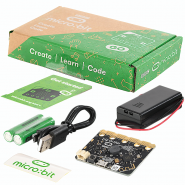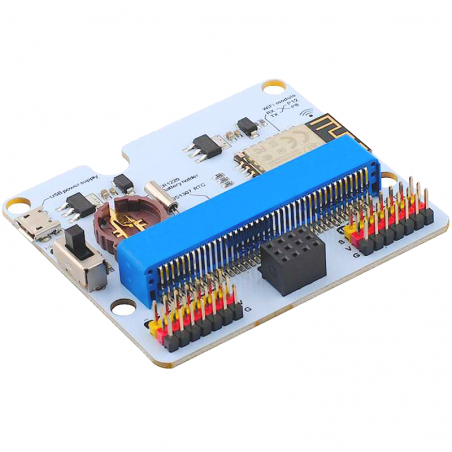
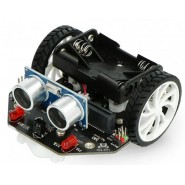
Maqueen v4.1 - Robô Educativo para...
- Em promoção!
- -4,00 €



IoT:bit é uma placa de expansão baseada em IoT para micro:bit. Ele usa o ESP8266 como placa de expansão WIFI e porta série para se comunicar com micro:bit. Ele também expandiu todas as portas IO disponíveis do micro:bit que é liderado pelo GVS e você pode expandir vários E-blocks de 3V como LED, sensor fotossensível e servo usando-o. Ao mesmo tempo, o IoT:bit com um buzzer integrado para som externo e um relógio RTC integrado para temporização sem fonte de alimentação. Vamos criar a sua própria IoT por makecode!
DESCRIÇÃO EM PORTUGUÊS BREVEMENTE DISPONÍVEL
Se tiver alguma dúvida neste produto não hesite em contactar-nos.
*Atenção: as imagens são meramente ilustrativas.
micro:bit have gained popularity right after they came into public, and rightly so. The IoT bit we have discussed here can help anyone fully grasp the digital apparatus of computers.
Establishing interconnected networks amongst devices can be crucial in data analysis. IoT-based components are often used to speed up this task for a micro bit. IoT bit is a device that works as an internet extension for a micro bit. It is applied on circuit boards to improve the means of productivity by creating valid communication with the micro bit. IoT bit is a very compact tool that is made with complicated circuitry within itself. Anyone who wishes a reliable internet WIFI extension board for their micro bit should try out this component. Various sorts of tasks done by them can be improved manyfold through this seemingly minuscule module.
The IoT-based module is equipped with many handy features that can ensure the efficiency of the micro bit. The IoT bit uses an ESP8266 as a board for WIFI expansion for data transactions through the micro bit. Led by GVS, the board also has extended IO ports for the micro bit, which lets you add a variety of other parts.
The onboard buzzer can be triggered from the outside, and the RTC clock within can stay functional even without a power supply. The IoT bit also has an earphone jack and an integrated buzzer. The design is very simplistic compared to the functions, as you can construct them any way you please. The four LEGO-like holes make them very adaptable when used in a micro bit.
the IoT bit is a valuable component that itself is made out of smaller components. The hardware of any electrical entity can be deemed very important. Through the micro bit, the direct current is supplied via a USB at five volts. The expectation for maximum current is around 800mA, which is appropriate to keep the micro bit functional. The hardware stays operational from -25 to 80 degrees Celsius. The WIFI module used for the micro bit is labeled ESP8266.
The ESP12F is very reliable as it is widely used in components similar to IoT bit. The passive buzzer is worth mentioning too. The RTC timing mechanics lets the device memorize the pace of time even after cutting off the power supply of the micro bit. RTC battery for the micro bit is something you can add in yourself. The battery requires a CR1220 cell. The coding port is a serial port in the micro bit that can delineate the IO slot.
Adding components to a micro bit can be difficult as it is a miniature computer. The IoT bit is a very sizable addition to the micro bit. It has a surface area of fewer than 50 centimeters and is 23 millimeters in depth. The printed circuit board is an essential part of the entire system. The PCB thickness is about 1.5mm. IoT bit has four adaptable slots, which let them get attached to the micro bit. Each of these holes is 2.4mm in diameter.
There is much to discuss a variety of functions visible on the interphase of IoT bit. The micro bit you use will probably have lots of potential in it, which you could not utilize because of not having the right component. IoT bit has a GVS leaded function had grants access to the electronic building module and also a functional 12C communication device. No need to reset the time every time you start the micro bit because of the RTC timing system.
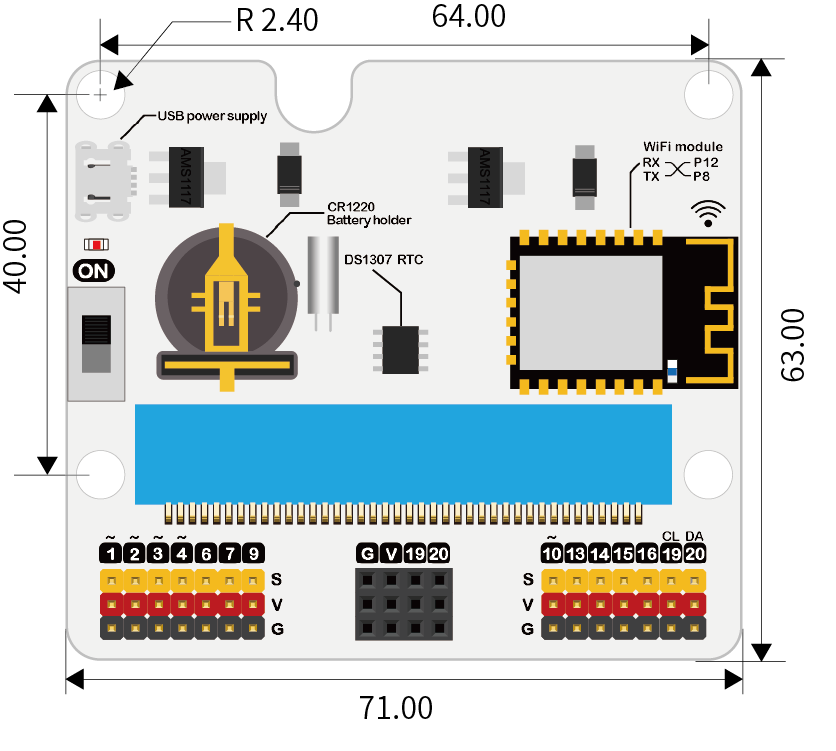
Integrated ESP12F WiFi、RTC and passive buzzer module
Extended most IO ports by GVS
Silk-screen indication onboard main components
Separately lead IIC interface, directly plug in OLED, BME280 and IIC, etc
Integrated buzzer and earphone jack
Adaptive for LEGO (4 standard spacing fixed holes)
| Items | Parameters | Remarks |
|---|---|---|
| Name | ELECFREAKS iot:bit for micro:bit | - |
| SKU | EF03426 | - |
| DC supply | USB-5V | - |
| Maximum power current | 800mA | - |
| Operation temperature | -25~80℃ | - |
| WIFI module | ESP8266 | ESP12F |
| Buzzer | Passive buzzer | - |
| RTC timing | DS1307 RTC | - |
| RTC timing battery | CR1220 button cell | Equipped by yourself |
| Lead out | Not all | - |
| port lead | Serial port can map the IO port | Coding |
| I2C port lead | 19、20 pin | Only for I2C pin |
| SPI port lead | 14、15 pin | for common IO |
| Size | 71.00mm X 63.00mm | Without packing |
| Net weight | 30.00g | Without packing |
Product size:71mm x 63mm x 23mm
PCB thickness:1.5mm
Hole diameter:2.4mm
Pin interface drawing
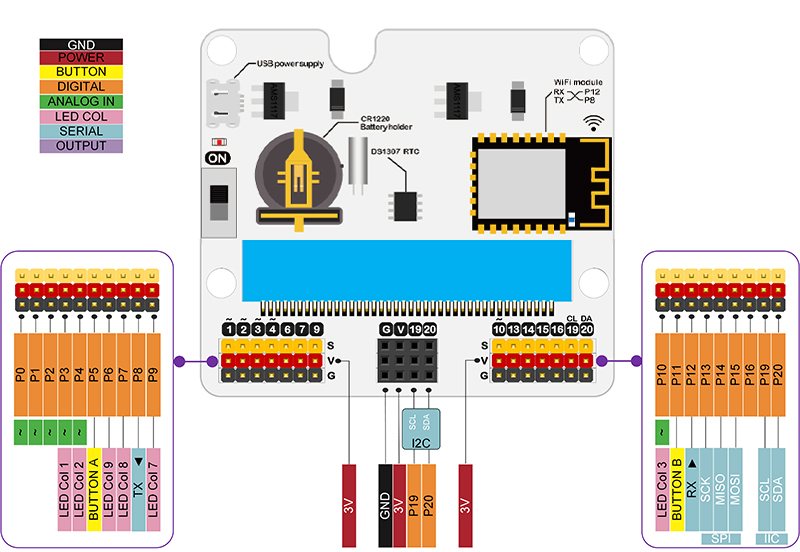
Introduction of main module
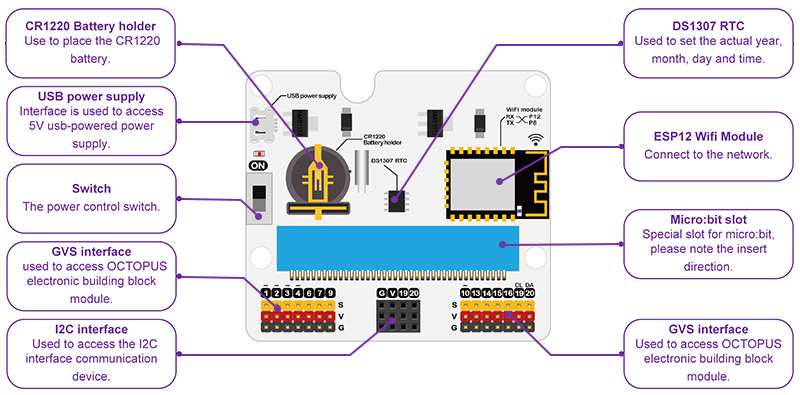
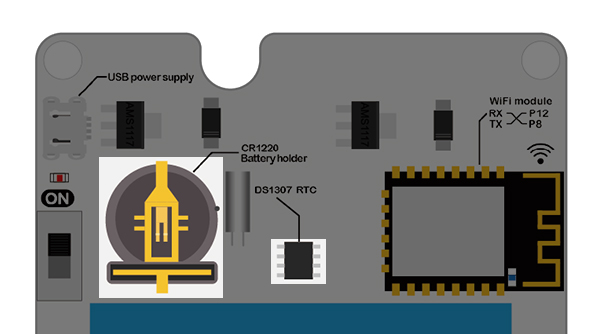
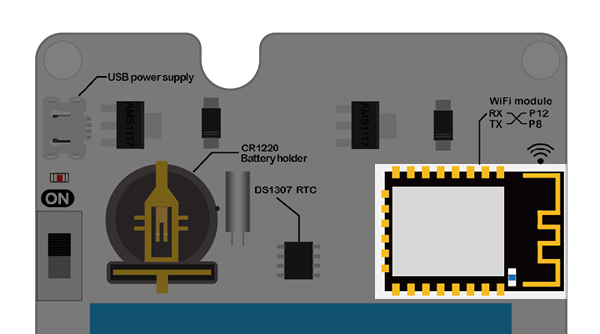

Coding:Makecode/Micropython/JavaScript/
Coding developed by Microsoft and mainly published by micro:bit official.
https://makecode.microbit.org
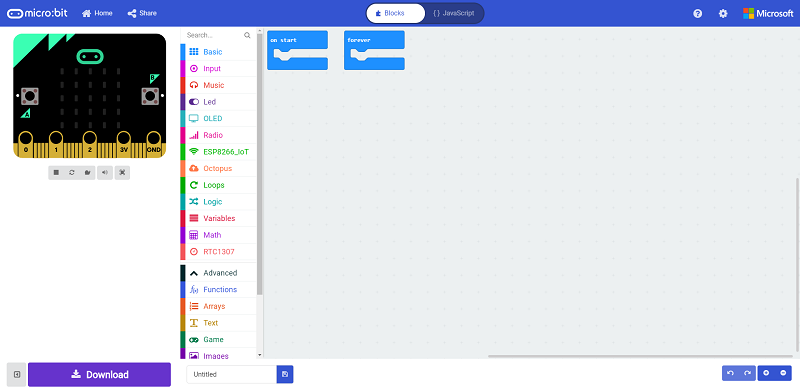
Click on JavaScript of the makecode for JavaScript coding.
https://makecode.microbit.org

Using MU for advanced coding methodMicroPython
https://codewith.mu/
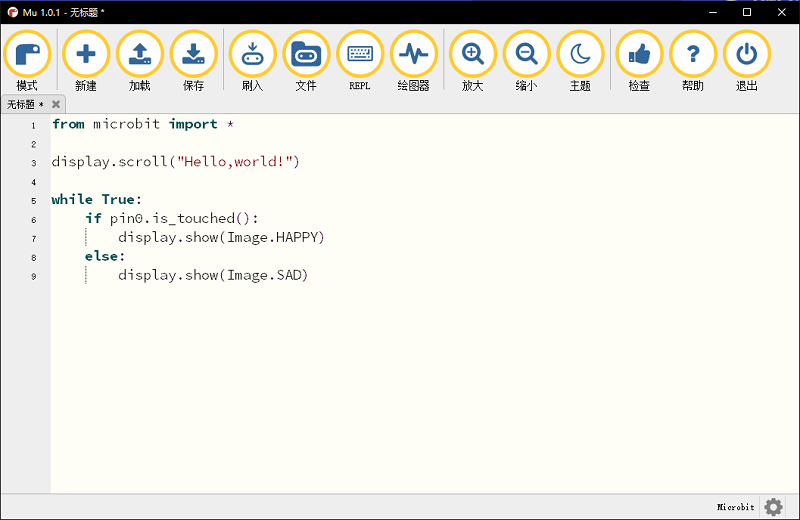
Produtos Associados

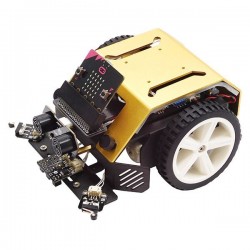
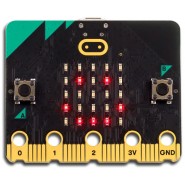

IoT:bit é uma placa de expansão baseada em IoT para micro:bit. Ele usa o ESP8266 como placa de expansão WIFI e porta série para se comunicar com micro:bit. Ele também expandiu todas as portas IO disponíveis do micro:bit que é liderado pelo GVS e você pode expandir vários E-blocks de 3V como LED, sensor fotossensível e servo usando-o. Ao mesmo tempo, o IoT:bit com um buzzer integrado para som externo e um relógio RTC integrado para temporização sem fonte de alimentação. Vamos criar a sua própria IoT por makecode!

